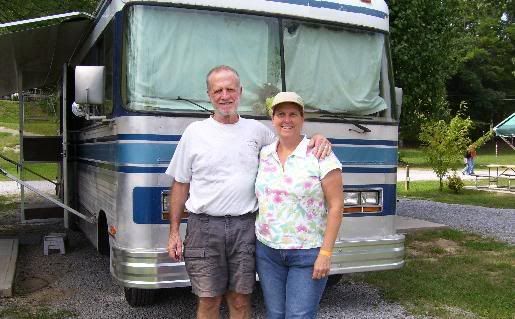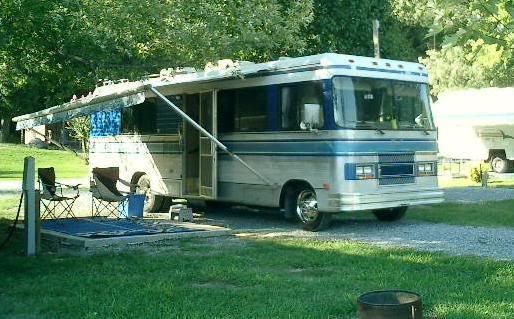Go to...  | Start A New Topic  | Search  | Notify  | Tools  | Reply To This Topic  |  |
First the background information... Bought the Barth in July and drove around 900 miles. Ran great no real issues. Than I ran out of gas. Put gas in and ever since then I can't get it to go very far before she quits on me. At first I was able to go about 150 miles. Than 100, than 50, now she is to the point of not making it more than about 5 miles....and once it quits on me I have to wait about 10-20 minutes before I can get it to start again. I had the fuel filter replaced up by the carburetor. Turns out there was never one there to begin with. I believe there is also an inline fuel filter and this has not been replaced. Replaced the gas cap. Now the shop claims that the fuel pump is fine. However I'm not sure that they have ever checked the pressure comming from the fuel pump. The guy told me that mechanical fuel pumps either fail or they don't, there is no in between....my uncle tells me other wise. The shop says it is probably my fuel sock in the gas tank. So they dropped the gas tank and ripped that all apart and now they say they can't find a replacement sock that they don't make them anymore. I'm a little upset that they went through all of this work to drop the fuel tank and remove the fuel sock without first verifying that they had a replacement. Searching on google with my make/model/year isn't going to quite do the trick. My uncle is a little surprised that there is even a fuel sock there. My uncle has worked on plenty of 1970's GM engines in his day. Do any of you have suggestions for me on how to go about my problem? 1. Where can I find a replacement sock for the gas tank. 2. Should I replace the fuel pump? 3. How can I refurbish the fuel tank myself, since it is already sitting on the ground at the shop they called and told me that the nearest place that will refurb it is like 100 miles away. 4. Any other suggestions? this all started after running out of gas. 1973 Barth on a 1972 P30 GM Chassis. 454 Motor. Also has an electric fuel pump assist in addition to the mechanical one. Helpless in Philly. 1973 Barth Limited Chevy P30 Chassis 454 Engine | |||
|
RB, In reading your post, am I correct in understanding you have not changed out the inline fuel filter? It should be located along the frame where the fuel line runs... not difficult to locate or change. It seems to me this would be a prudent thing to do as likely it is clogged if junk got sucked out of the tank. Kirk 1989 22' Regal 454 | ||||
|
Glassnose Aficionado |
I'm with Kirk. There has to be an inline somewhere, and that would do exactly what you're describing. 79 Barth Classic | |||
|
| First Month Member |
The fuel sock sounds reasonable to me. If you have a gob of floating crud, it stays on the top surface of the fuel in the tank until the level gets really low. Then, when the level gets way low, it attaches itself to the sock and won't let go. I am surprised that your shop is unable to find a replacement sock. I would take the old one to whichever NAPA has the most experienced employees, and see if they can match it up. I have been successful in cleaning GM socks. The last one I did was a brown plastic (saran?) screen with a white (polyethylene?) disk at one end that had a hole that was a tight fit around the fuel pick up tube. I cleaned it with spray carb cleaner, if I remember correctly. I had the tank out of my Barth a few years back, but sadly, I cannot remember if mine has a sock or not. I would certainly replace the inline filter. It is probably somewhere along the right frame rail. It is usually close to the entry door. Even if it doesn't fix the problem, a new filter is always good maintenance. Filter hoses, too. As far as "should I replace the fuel pump?", that depends on how old it is. They have a limited life span. For sure, I would replace the rubber line at the fuel pump. That is a fire safety item. . 84 30T PeeThirty-Something, 502 powered | |||
|
 3/19 3/19 |
Running out of fuel has potential secondary consequences. I am confused as to the filter you "replaced" by the carb where "never one there". Perhaps you added another inline. But, the other inline, you believe to exist, probably does and must be replaced -- probably not the pump. | |||
|
 6/12 6/12Formally known as "Humbojb"  |
There is a company in Kentucky that refurbishes Gas tanks. From what I understand it's not wise to mess with gas tanks. The company is called Roppel http://www.roppels.com/louisvi...gas-tank-repair.html We've had a couple gas tanks re done. The one on the RV was 40 gal & we only had the inside done. It was around $250. We could not find a new gas tank with our configuration. Our problem was at the carb. Their is a fuel filter just ahead of the steel fuel line in engine compartment. It is little but fairly easy to remove & check. Go here & read our problems & fixes to see if anything might help you out. https://www.barthmobile.com/eve...7061/m/568104771/p/1 We have good contacts for sending unit refurb, Oscar Heritz rebuilt our carb for around $250 and of course the Roppel for gas tanks. Did you get a look at what the tank looks like inside? Good luck. Tere
| ||||||||||||
|
 3/11 3/11 |
We build our own gas tanks and never use socks unless we install an "in the tank" fuel pump (which is common with fuel injection). Basically the tank pickup is just an aluminum or steel tube and a good inline fuel filter and adjustable electric fuel pump is all you need. The adjustable ones have a knob that allows you to set the fuel pressure to the proper pressure (5-6 psi at the Q-Jet inlet). You can buy a block off plate for your mechanical pump from any auto parts store. Most rodders use electric fuel pumps for the Big Block Chevrolet motors. For repair of your tank check these people out http://gastankrenu.com/. We used them for a few older restoration jobs and they did a great job, with warranties. If you don't have a vacuum gauge you should add one. When fuel starvation exists you will see a drop in vacuum or constantly low vacuum. As said above start by replacing every rubber hose in the system and put a pressure gauge on the carb inlet. If you don't have 5-6 psi you have either a pump or filter problem. Also most racers, if they run a Q-Jet take out the filter as it is basically useless anyway. A good, high capacity fuel filter will prevent anything from getting into your carb. If none of these work, check for vaccum leaks at the manifold, leaks in pvc or brake booster hoses etc. Any lines that connect to the intake and draw vacuum can do what you have, especially the small vacuum line that runs your dash heat and air dampers. Get the gauge! 1993 32' Regency Wide Body, 4 speed Allison Trans, Front Entry door, Diamond Plate aluminum roof & 1981 Euro 22' w Chevy 350 engine and TH 400 tranny | |||
|
Most gasoline sold today contains alcohol. In 1972 very little of the rubber products in your fuel system were resistant to alcohol and fuel lines and other rubber parts desolved. This includes the float bowl seat in the carb. '92 Barth Breakaway - 30' 5.9 Cummins (6B) 300+ HP 2000 Allison Front entrance | ||||
|
"Host" of Barthmobile.com 1/19 1/19 |
Here's how I would approach this. Get whatever sock will fit it, bring it to NAPA and match it up with something, Ford - GM - Chrysler. It really doesn't matter. Replace the inline fuel filter. Use a rubber tipped blowgun to blow out the lines. There should be no back pressure when doing this. If there is, you've got a plugged line or there is a filter somewhere downstream or maybe a rubber fuel line is kinked. Replace the rubber fuel lines. Chances are the fuel lines are cracked and hard. Could also be sucking in air. Still not right? Install a fuel pressure gauge between the pump and carb and get readings - No/very low pressure is an indication of a weak mechanical fuel pump or low flow. Or, in some rare cases, the lobe is worn off of the camshaft. Does it start to backfire when it goes to die out. No? Perhaps it isn't fuel related... That inline pressure gauge will tell you a lot Maybe, as Gary stated, you've got a "float bowl seat in the carb" that's acting up because of the alcohol found in today's gasoline. How does it run when there are no problems - strong or weak?
| |||||||||||||||
| ||||||||||||||||
 3/23 3/23 |
I would replace all rubber lines as previously stated. I have an old engine that I tried to fire up this Spring and found no fuel to the carb. Tracked down the problem and found the E10 has caused the original rubber line to swell and separate from the fabric reinforcement so the line was nearly collapsed. 5 miles is not quite in the bowl but the bowl plus the line from the first rubber hose collapse time, maybe. | |||
|
Official Barth Junkie |
As for the in carb filters... Some of the QJets had a filter with a rubber valve and spring INSIDE the filter to regulate incoming pressure (see 1986 GM P30 service manual Chapter 6C1 page 19 Fig 21, also page 6C1-20 fig 22) Most have just the external preload spring. (page 6C1-20 fig 23) Here are the short and long versions. If you have the short one and insist on using a carb filter, get the longer inlet housing and use the long one. Note also this short one has something in the inlet hole... hmmm 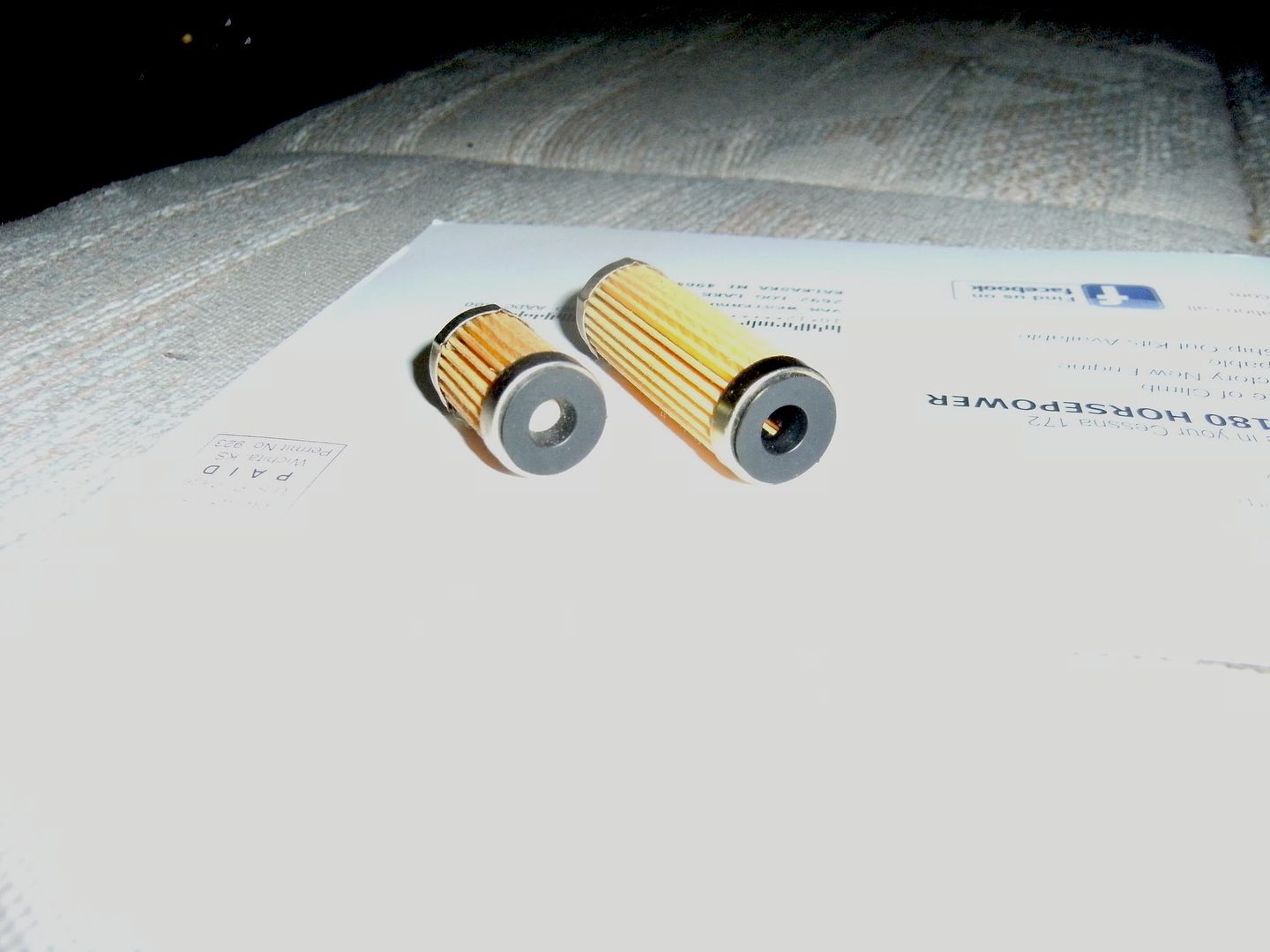 There is a spring loaded valve inside the filter! 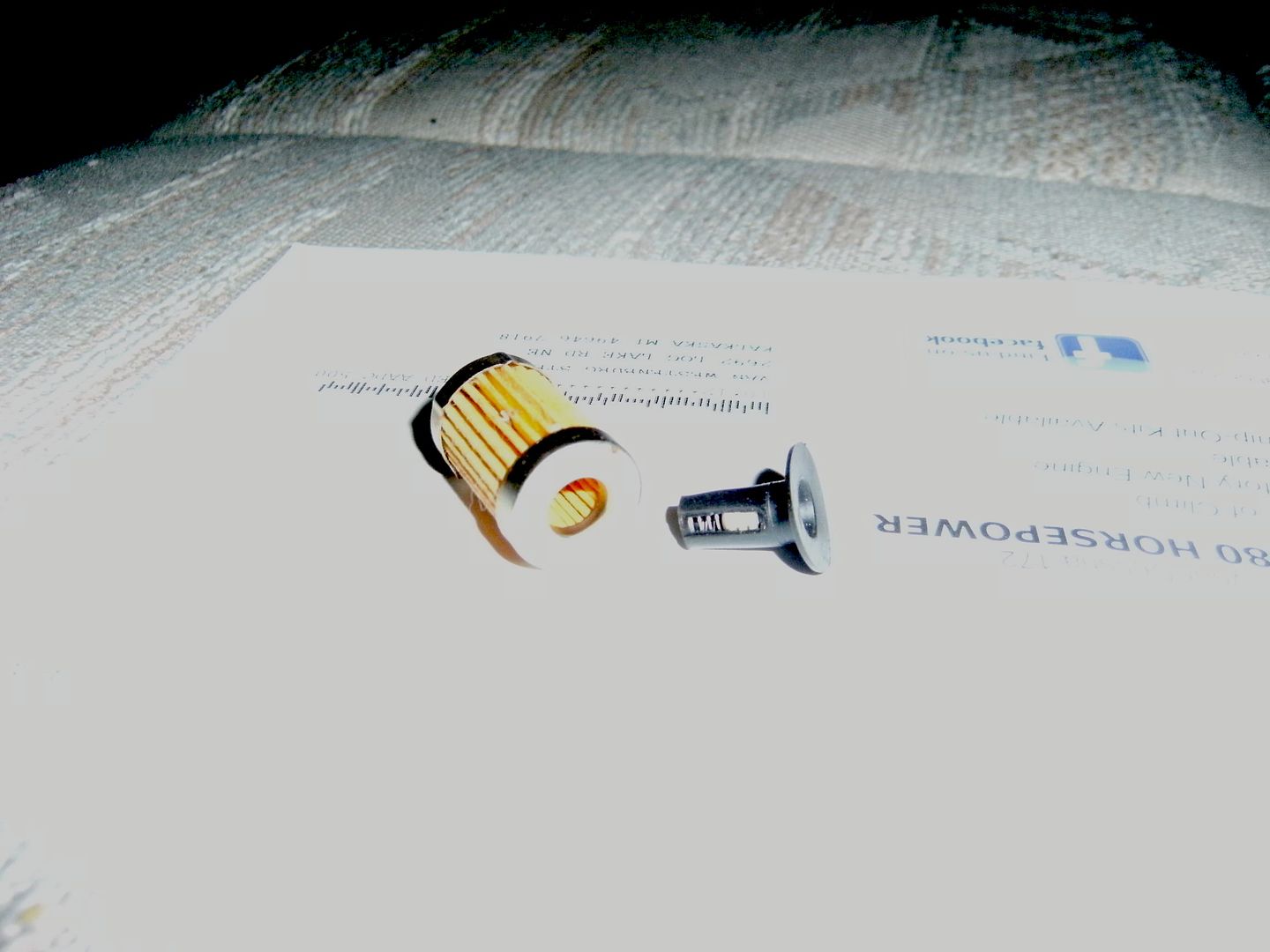 If you have this style of filter it will take over 2 psi to get fuel into the filter! If the pressure is low it will cut it off. If the filter plugs, the external spring will allow the filter to bypass fuel... I would get rid of that cursed puny filter (either style) and install a good inline filter. carb inlet 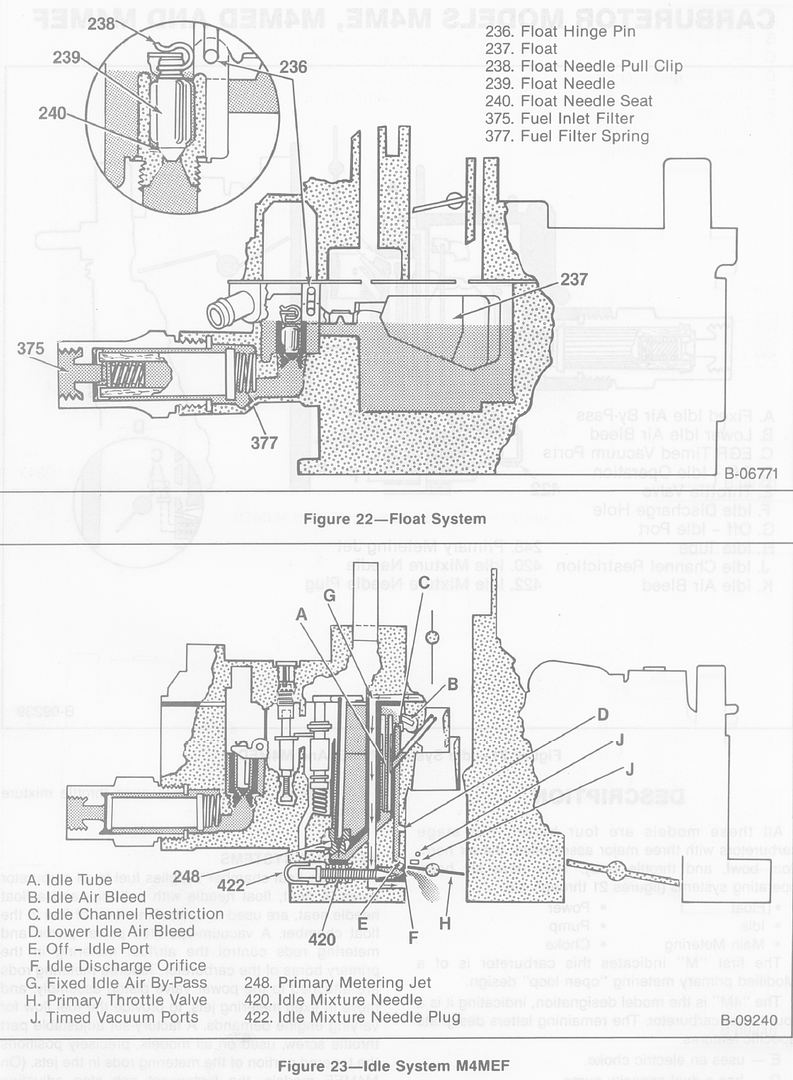 | |||
|
 6/12 6/12Formally known as "Humbojb"  |
Tri-Starr Radiator Repair in New Berlin, New York will rebuild the fuel tank sending unit. Their number is 607-847-6848. The cost in April, 2010, was $192.00 including the shipping back to us. We also replaced all of the rubber fuel lines with alcohol/fire rated line purchased from West Marine. Also used center pull stainless hose clamps. We put a new mechanical fuel pump on and replaced the metal line from the fuel pump to the Q-jet. And we had the Q-jet rebuilt as Tere has mentioned for $250.00. Now, no fuel problems and it doesn't care if the darn fuel is the 10% ethanol mix.
| ||||||||||||
|
| First Month Member |
Oldsmobile used the long inlet housing.
The reason I like it is that it is the last chance to keep crud out of your carb. I replace my inline filter underneath, but in a 28 year old MH, one never knows when a chunk of crud between the inline filter and the carb filter will come loose. It happened to me once, and caused a roadside Q-Jet teardown. It is my supreme hope that the fuel line is now clean, but I use the filter just in case. With double stretched springs, just to be sure it can't bypass. . 84 30T PeeThirty-Something, 502 powered | |||
|
Hi everyone. Well I just completed a 200 or so mile journey from Philly to the eastern shore in Maryland in the Barth. Wanted to let you guys know what I did to fix the problem. After paying a thousand dollars to the jokers at the shop I got the carb rebuilt. While I was 100% happy that still didn't fix the problem!!! So I started off with the basics. I filled up a five gallon jug of gas and hooked it into the mechanical fuel pump and she ran great. I than unhooked the fuel line on both ends of the electric pump no gas. Did the same on the water separator and no gas. Unhooked right from the gas tank with only 3 inches of line left and still no gas. Stuck a wire up there and now I have gas and a lot of it Thanks all for your help. If anyone is getting a carb rebuilt I rev come d the shop I sent mine too. Avanti performance. 1973 Barth Limited Chevy P30 Chassis 454 Engine | ||||
|
| Powered by Social Strata |
| Please Wait. Your request is being processed... |
|
This website is dedicated to the Barth Custom Coach, their owners and those who admire this American made, quality crafted, motor coach.
We are committed to the history, preservation and restoration of the Barth Custom Coach.
We are committed to the history, preservation and restoration of the Barth Custom Coach.

